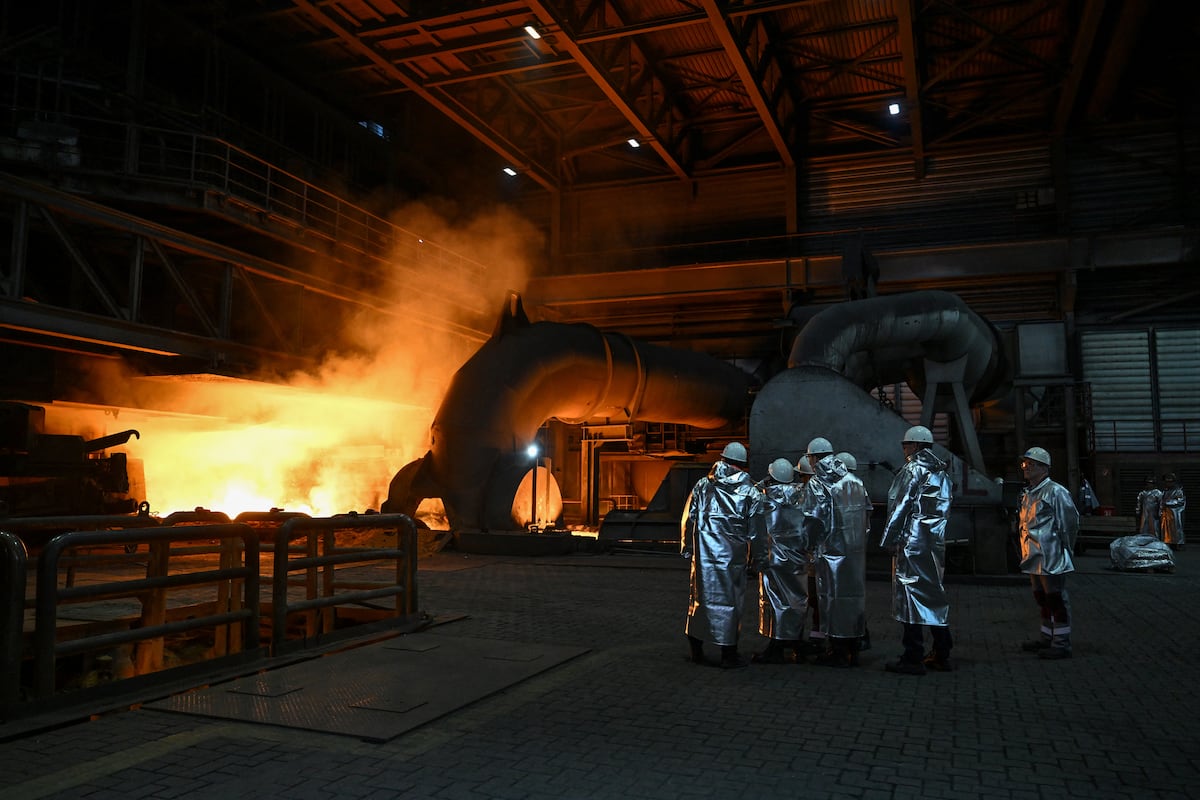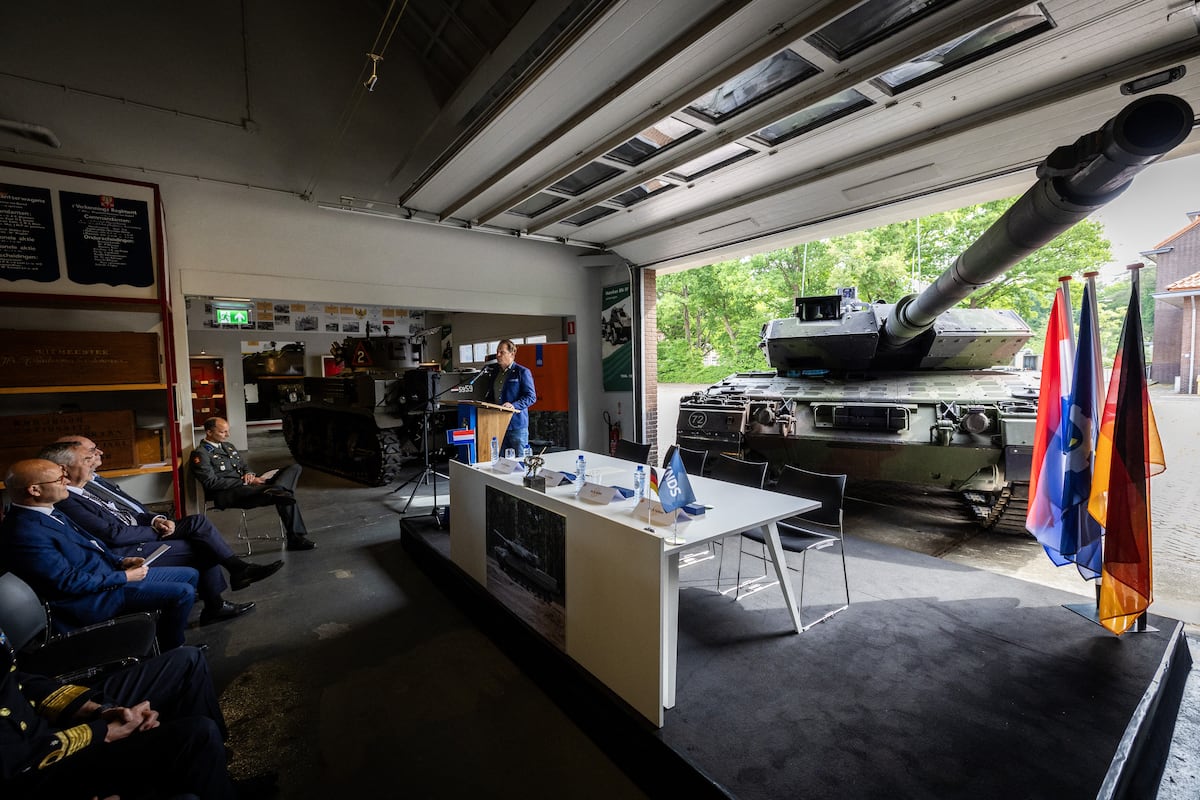THE HAGUE, Netherlands — For generations, the blast furnaces of the Ruhr Valley, Silesia and Lorraine have formed the backbone of European heavy industry. Now, an uncertain geopolitical environment has thrust them back into the center of attention, with the European Union vowing to revitalize the continent’s metals sector.
The pitch: Europe wants to redouble its efforts to make steel “green” – producing the key ingredients for tanks, shells and ships in an environmentally conscious way.
The European Steel and Metals Action Plan, released on March 19, represents Brussels’ most comprehensive strategy yet to shore up an industry facing multiple existential threats: Chinese overcapacity, crippling energy costs, and the looming shadow of new American tariffs — all while fostering its transformation to climate neutrality.
The steel industry is one of the largest producers of greenhouse gases globally, responsible for roughly a tenth of total CO2 emissions. This is because it takes immense amounts of heat and, by extension, energy to melt the metal in blast furnaces.
But with European rearmament en vogue and free international trade out of fashion, the continent is set to experience a boom in demand for steel as a key ingredient in its buildup of its armed forces.
A strategic shift
The plan’s linking of industrial policy to defense readiness represents a significant shift in how Brussels frames its economic priorities. Commission officials explicitly linked the question of steel production to defense readiness amid rising tensions with Russia and uncertainty about long-term American security guarantees.
The European Commission, headed by Ursula von der Leyen, serves as the executive branch of the European Union. It was the commission that floated the ambitious plan to rearm Europe, which promises to see Europe mobilize close to a trillion dollars for its defense sector in the next five years. Just days after that plan was announced, the EU followed up with its ambitious metals plan.
The EU, at its core, was built on steel, growing out of the European Coal and Steel Community that established in the aftermath of World War 2. And indeed, domestic production still covers 90% of the continent’s current consumption, the European Commission said. The situation is “more worrying,” in the EU’s words, for aluminum and nickel, where domestic production covers only 46% and 25% of Europe’s demand, respectively.
“All these metals are essential for defense,” the EU’s paper reads. It goes on to list out the requirements for specific armaments: “A main battle tank contains 50 to 60 tonnes of high-quality steel; a self-propelled artillery system up to 100 tonnes; a fighter aircraft 3 tonnes of aluminium.”
A new start
Europe’s metals industry has been squeezed from multiple directions. Energy costs following Russia’s invasion of Ukraine have skyrocketed, with European producers paying up to five times more for gas and three times more for electricity than their American counterparts, the European Commission conceded in its report. Meanwhile, imports from Asia have nearly tripled over the past decade, with every third ton of steel in the EU now coming from elsewhere.
“The foreign trade policy proposals are a step in the right direction,” said Kerstin Maria Rippel, CEO of Germany’s Steel Industry Association. She said that it “is only logical in view of the increasing import pressure and the consequences of the confrontational U.S. trade policy.”
The EU’s six-pillar action plan hopes to alleviate some of the other ailments, too, by addressing energy costs, carbon leakage prevention, industrial capacity protection, metal recycling, job protection, and providing investment support in addition to protectionism.
Most notably, it includes a plan for a €100 billion ($108 billion) Industrial Decarbonisation Bank and a €1 billion pilot auction in 2025 aimed at electrification and low-carbon steel production.
It places “green steel” firmly at the heart of the European metals strategy. Using electrical furnaces and hydrogen, the emissions from the steel industry can be cut by as much as 95%. When burning hydrogen instead of coal or gas – the byproduct produced is water steam – rather than CO2.
European steel producers have generally welcomed the plan. It demonstrates “understanding of the urgency surrounding the situation and a readiness to address key structural challenges,” praised Aditya Mittal, the CEO of ArcelorMittal, Europe’s largest steel producer. And the European Steel Association’s president, Henrik Adam, echoed the sentiment, saying that “the European Commission is sending a clear message: a strong European Union needs a strong European steel industry.”
However, both executives stressed that energy costs remain “the elephant in the room,” with Adam noting they are “dragging down entire European industrial value chains.”
Greener pastures
Electricity costs, for instance, stubbornly hover at double or four times the price of other steelmaking locations. With the transition to electric arc furnaces, electricity consumption is expected to roughly double, industry associations say, further magnifying a cost disadvantage.
Nonetheless, electricity and producing renewable hydrogen may be a more suitable way forward for Europe than relying on old methods. Gas is used during pig iron production in blast furnaces, which account for about 60% of EU steel production but has been a sticking point since Russia’s invasion of Ukraine. During the 2022 energy crisis, energy costs reached 80% of total production costs for European steel producers.
While fossil fuel deposits cannot be conjured from thin air, renewable energy is seen by some as the solution to the continent’s energy woes, with solar, hydro and wind power available in ample quantities and ready for additional exploitation.
The third age of nuclear, still in its infancy, may play a role, too. Poland, for example, is progressing in its plans to build the country’s first nuclear power plant, with a final contract to be concluded this year. Nuclear power, while not strictly renewable, does not emit any harmful gases because no fuel is burnt. The electricity from these environmentally conscious sources can then be used to either power electric arc furnaces directly, or to split water to produce “green hydrogen,” the theory goes.
Russia’s invasion of its smaller neighbor Ukraine has brought to the fore the importance of energy resilience for the European Union. The European Defence Fund – an EU mechanism to support research and development with military applications – specifically designed this field as a “priority area” for defense investment in its 2025 work program.
The Union has called climate change “a priority for the EU’s security and defense policies” for years. It goes well beyond simply weaning the bloc off of foreign sources of gas. EU bodies warn that rising temperatures will have knock-on effects on security as societies struggle to adapt to a growing water scarcity and lower agricultural output.
The European Union’s diplomatic branch, the External Action Service, believes that “this will increasingly undermine peace and security, especially in fragile countries.” The EU estimates that 5.5% of global CO2 emissions may stem from the defense industry.
Linus Höller is a Europe correspondent for Defense News. He covers international security and military developments across the continent. Linus holds a degree in journalism, political science and international studies, and is currently pursuing a master’s in nonproliferation and terrorism studies.
Read the full article here








Leave a Reply